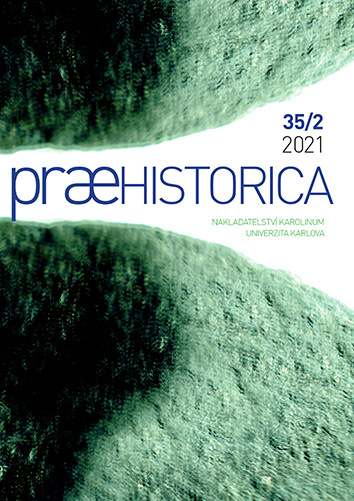Měsícovité podstavce pozdní doby bronzové a starší doby železné v Čechách a jejich postavení v evropském kontextu
Moon-shaped idols of the late Bronze Age and earlier Iron Age in Bohemia and their place in the European context
Author(s): Zdeněk MazačSubject(s): Archaeology
Published by: Univerzita Karlova v Praze, Nakladatelství Karolinum
Keywords: moon-shaped idol; andiron/firedog; Late Bronze Age; Hallstatt Period; Early Iron Age; chemical-mineralogical analyses; experiment
Summary/Abstract: Moon-shaped idols comprise a very specific and variable category of ceramic, rarely even stone, artefacts. The beginnings of their occurrence and spread in Central Europe can be connected with the cultures of Urnfields, especially the Upper Danube and Middle Danube groups. Their development subsequently continued in the Early Iron Age, when they spread beyond Central Europe to northeast Spain and north Italy. The total number of finds currently exceeds the estimate from 2004, which was around two thousand individual items. The find environment of these products is relatively variable. They usually appear in settlements, but also in situations that can be considered manifestations of cult behaviour. In southeast France and south Germany, some of the moon-shaped idols are found in the context of graves from the Late Bronze Age. Graves equipped in this way can be recorded at the burial grounds of the Bylany and Kalenderberg cultures and in the environment of the Lusatian Urnfields of the Early Iron Age mainly in East Bohemia and Polish Silesia.
Journal: Praehistorica
- Issue Year: 35/2021
- Issue No: 2
- Page Range: 5-142
- Page Count: 138
- Language: Czech

